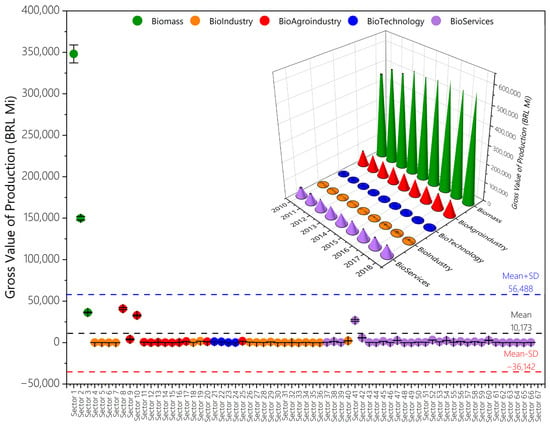Economies, Vol. 13, Pages 53: How Big Is the Biomass-Based Bioeconomy in National Economies? Concept, Method, and Evidence from Brazil
Economies doi: 10.3390/economies13020053
Authors:
Marco Antonio Montoya
Gabriela Allegretti
Elen Presotto
Edson Talamini
Measuring the contributions of the bioeconomy depends on the concept and method used. The concept of bioeconomy linked to biomass is widely used, and estimating the bio-based share in sectors, activities, or products is a limitation and a challenge. Therefore, the present study aims to propose a method for measuring the contributions of biomass-based bioeconomy (BmBB) by tracking the direct and indirect flows of biomass embodied in goods and services for intermediate and final demand. Our analysis focused on measuring the impact of BmBB on the gross value of production (GVP) and the value added to biomass through incremental improvements to the input–output models. The development and application of the method used data from Brazil’s input–output matrices from 2010 to 2018. The results suggest that the BmBB’s GVP shared 5.75% of the GDP, on average, between 2010 and 2018 and more than 6% in recent years. The BmBB accounted for 4.87% of the Brazilian economy’s added value. The ‘Biomass’ aggregate, comprising agriculture, livestock, and forestry, contributes 78.3% of GVP and 8.0% of BmBB’s added value. The opposite occurs with the ‘BioAgroindustry’ aggregate, whose GVP was only 12.3% but contributed 81.5% of the BmBB’s value added. The significant volume of direct sales of ‘’Biomass’ in the final demand of households and the foreign market may explain this situation. We concluded that the proposed method contributes to measuring the BmBB, capturing the biomass share involved in producing, manufacturing, and consuming goods and services.
Source link
Marco Antonio Montoya www.mdpi.com

